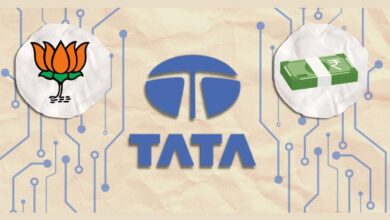Researchers at Virginia Tech have developed a technique that could provide COVID-19 test results within minutes.
According to a university release, Jiangtao Cheng and Wei Zhou, both engineering professors at Virginia Tech, headed a team that developed a “droplet biosensing” method that uses nanotechnology and laser beams to detect the contents of a liquid droplet sample. Their research was published in the peer-reviewed scientific journal ACS Nano last month.
Cheng and Zhou’s method would cut down test verification time, which often takes several hours, to “minutes,” and would reduce the error margin and the chance of false negatives, the release said.
Currently, the most widespread and reliable coronavirus test uses a technique called polymerase chain reaction (PCR), in which RNA is extracted from a person’s saliva sample and then copied billions of times so that there’s a large enough sample of the molecule to detect the presence of the virus.
Other tests on the market, like the ones for sale online that people can take at home, are faster and easier to conduct, but less reliable. The U.S. Food and Drug Administration (FDA) approved an at-home test kit in April, but only healthcare workers and first responders are allowed to use it, and they still have to ship the sample back to a lab.
The VT researchers’ method can identify the coronavirus even if patients have had the virus for a short period of time and therefore have a low viral load that other tests are unable to detect, the release says.
Unlike PCR, the researchers’ new technique does not require RNA extraction or amplification. Instead, scientists place the liquid sample onto a surface with different levels of friction that separate out droplets of the liquid. They then heat the surface so the liquid partially evaporates, causing its contents to “float toward the nanoantenna,” which work as sensors. The sample shrinks into a package of molecules that scientists target with a laser beam, generating a light signal that allows them to detect the frequency of the coronavirus.
“All of this happens in just a few minutes, and the fingerprint spectrum and frequency of the coronavirus can be quickly picked out of a lineup of the returned data,” the release said.
The research paper presents biosensing droplets as a general method for separating the contents of a sample and detecting what the molecules are. The Virginia Tech release specifies that it can be used to detect COVID-19, but doesn’t give details on how the test would be deployed or how much it would cost.
The research team is pursuing a patent and applying for National Institutes for Health funding “to deliver the method for widespread use,” the release said.
Such a technique could help increase coronavirus testing rates in the U.S., which has lagged in testing capacity since the start of the pandemic. Some Americans are waiting as long as ten days to learn the outcome of their coronavirus tests, a delay that makes the results largely useless.
Earlier this week, the FDA granted emergency use authorization to allow Quest Diagnostics to use batch testing, a method that could cut down testing time and save resources by testing multiple samples at once.
Source: Fortune




